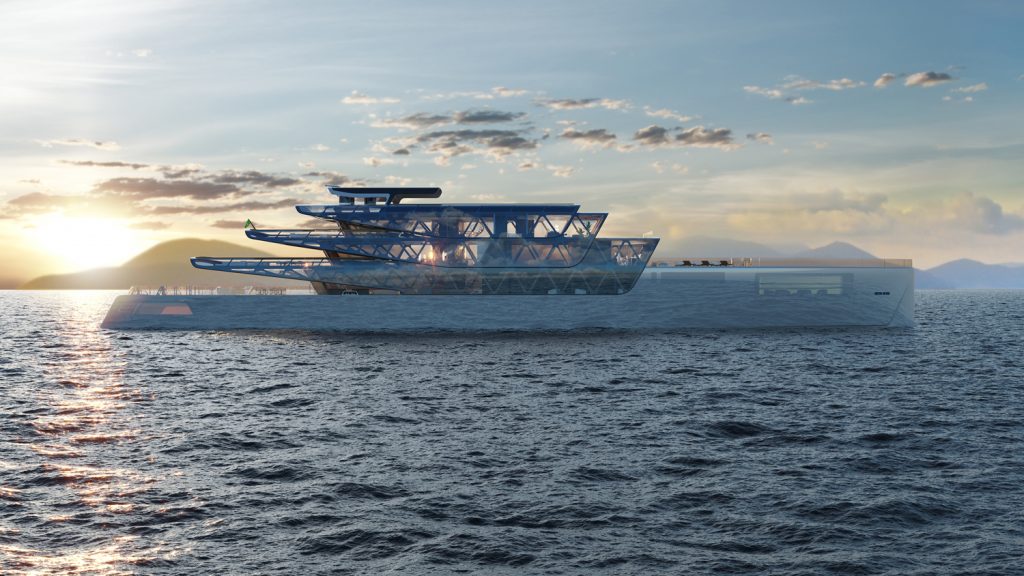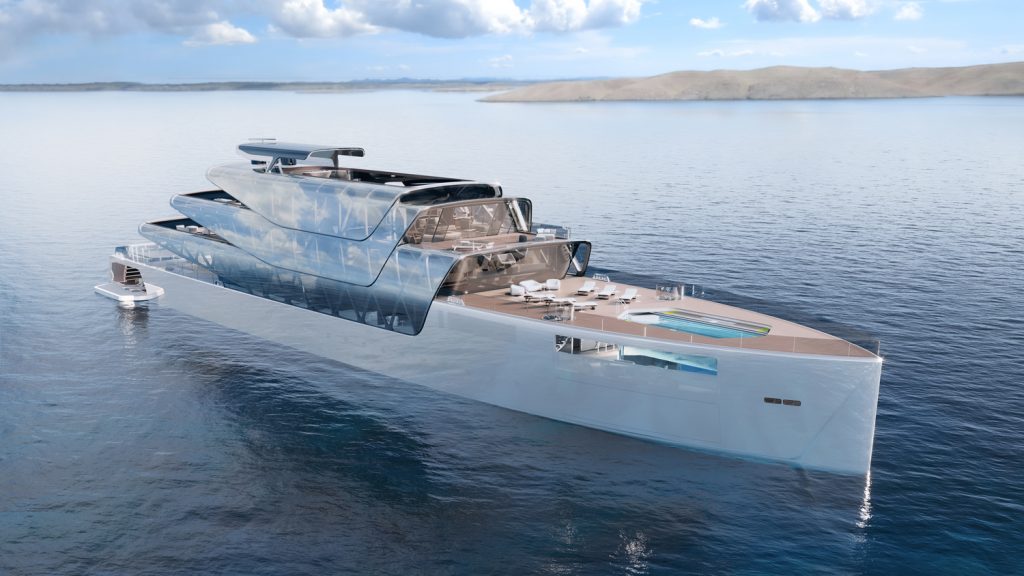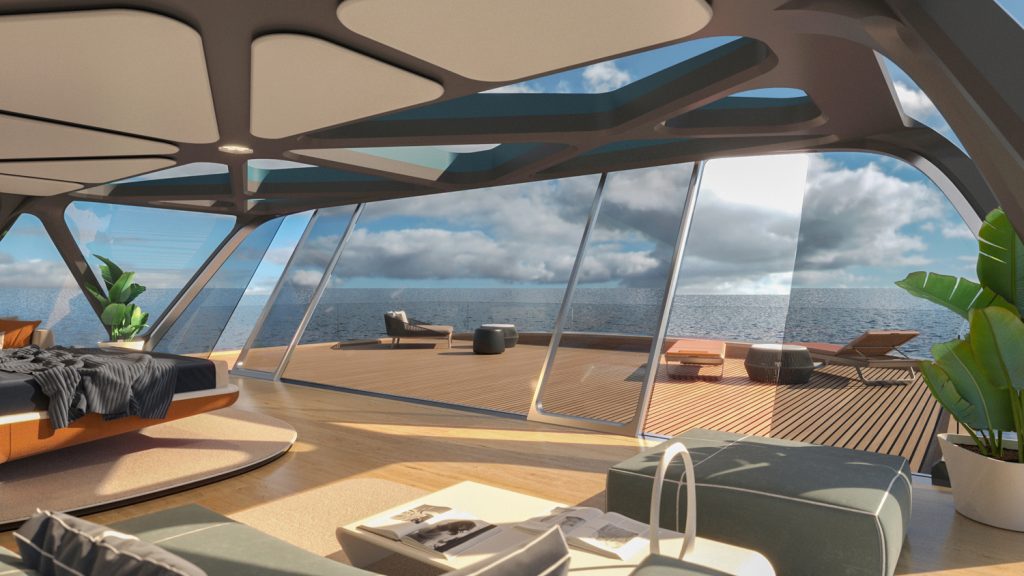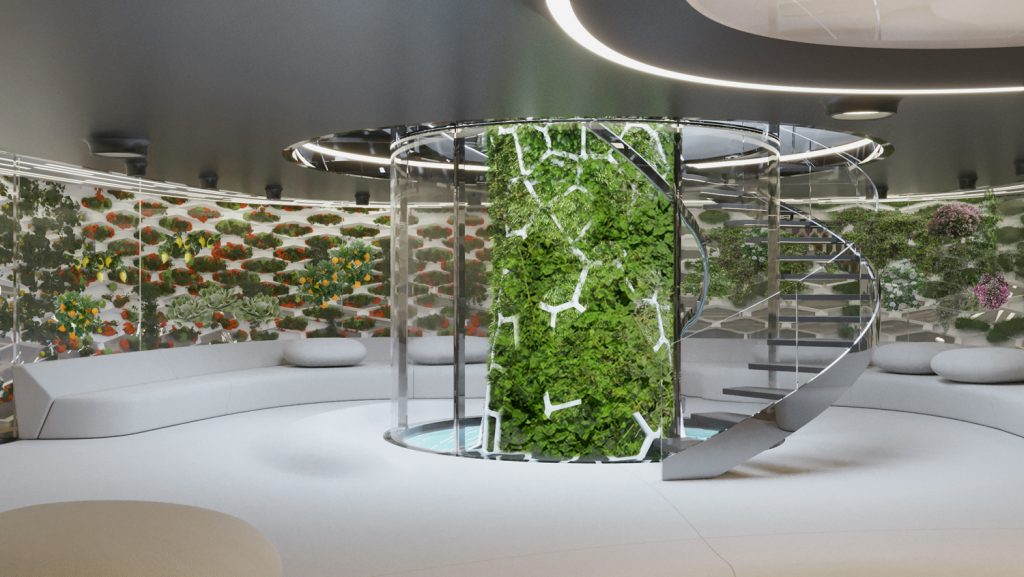
Designed to be “virtually invisible” – both visually and environmentally, the designer Jozeph Forakis has unveiled a concept for a superyacht that crashes through several boundaries on different levels
With reflective ‘Solar Wings’ the 88 metre Pegasus could be the world’s first 3d robotically printed superyacht.
It would, its designers claim, be solar-electric / hydrogen hybrid powered, with an infinite range and zero emissions.

And be equipped with multi-level “Tree of Life” hydroponic garden to provide fresh food and air purification
In keeping with the nature-friendly theme, the exterior design features a multi-tiered ‘wings’ superstructure with mirrored glass reflecting the sky, clouds, and surrounding environment to achieve the invisible look.
The glass of the superstructure incorporates transparent solar panels to power electrolysers extracting H2 from seawater. Fuel cells convert H2 to electricity stored in Li-on batteries for powering azimuth pods, and all operating and hotel systems.
This desire for an invisible yacht drove us to develop a true zero emissions yacht that is “invisible both in design and in her environmental impact,” says the designer.

The 88-metre superyacht’s construction uses robotic 3D printing to create a mesh framework integrating both hull and superstructure. The result is an extraordinarily strong and lightweight structure that can be produced using less energy, material, waste, space, and time compared to conventional construction.
The unique exterior design starts with a low, linear hull with a plumb bow and silvery metallic finish, which blends chameleon-like with the water’s colours and movements. This foundation at the waterline supports the superstructure with multi-tiered, ephemeral glass wings that reflect the clouds and the sky making the yacht appear invisible
Like a shape-shifting vessel from the future, the elegant, lattice framework of her 3Dprinted structure becomes invisible thru the reflective glass at certain angles and lighting conditions.
The dramatic triangulated structure allows light to penetrate all levels of the interior while framing the remarkable views in all directions.
The multi-level “Tree of Life” is a living, breathing monument to mother nature

The centre piece of the futuristic interior design is the multi-level “Tree of Life” – a living, breathing monument to mother nature and the nucleus of the hydroponic garden providing fresh food and air purification. The base of the tree emerges from a reflecting pool on the lower deck and is surrounded by the hydroponic + meditation Zen Garden. The tree extends vertically thru all four levels accompanied by a sculptural spiral staircase.
The spacious guest lounges showcase the harmonious balance of minimalist design and living nature, both inside – with living greenery and rich appointments integrated throughout – as well outside with uninterrupted views in all directions and copious daylight penetrating to the core.
The top level is exclusive to the owner, with forward facing master-suite featuring a large private terrace.

The forward pool club has an aquarium-style lap pool and expansive horizontal windows that transform into open balconies on both port and starboard. When closed, the pool cover functions as the helipad.
At the aft of the ship, the open beach club with an oversized Jacuzzi and fold-down balconies transforms into an enclosed solarium with sliding glass panels across the ceiling and down the transom bulkhead.
Solar energy converts seawater into hydrogen, producing zero emissions and infinite range.
In operation Pegasus will produce zero carbon emissions and will have a virtually unlimited range. Solar energy is used to convert seawater into hydrogen which is stored for longer periods. Onboard fuel cells convert the H2 into electricity stored short-term in Li-ion batteries.
